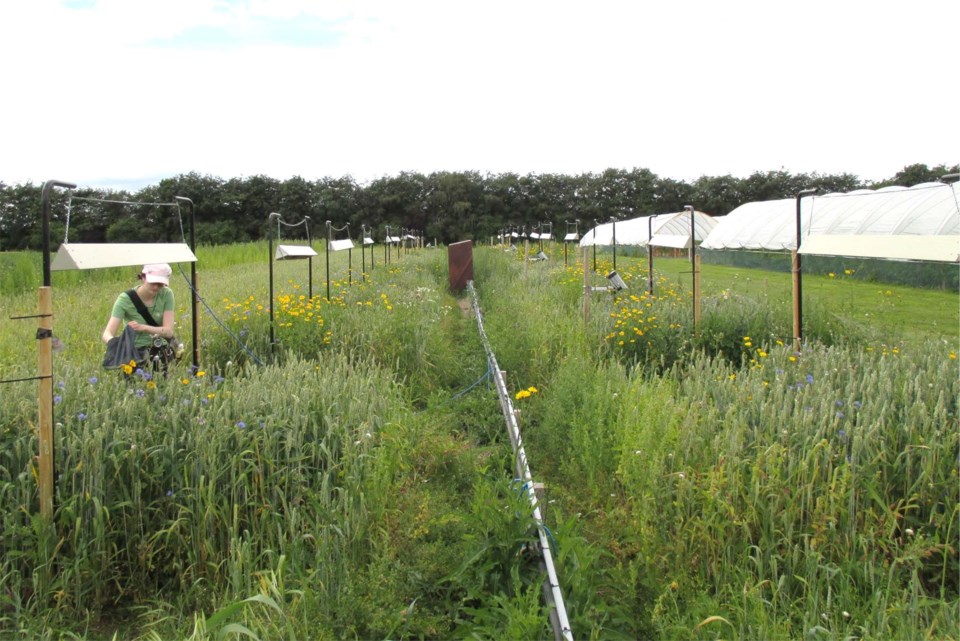A new study has found that 1.5 C of global warming could mean fewer flowers in our yards, with implications for both plants and pollinators.
Newcastle University post-doctoral scientist Ellen Moss published a study Feb. 23 in Frontiers in Plant Science on how climate change will have an immediate effect on wildflowers and pollinators.
Human activities have caused global temperatures to rise about 1 C above pre-industrial levels and are likely to reach 1.5 C by around 2040 without significant steps to reduce greenhouse-gas emissions, the Intergovernmental Panel on Climate Change has found. Many studies suggest this warming could make it impossible for some species to survive in their current homes, forcing them to either migrate or go extinct.
Moss and co-author Darren Evans set out to test the impacts of this warming through what they billed as the world’s first field-based experimental study of warming on wildflowers and pollinators.
Back in 2014-2015, Moss set up 24 two-by-two-metre plots at an experimental farm in the United Kingdom, seeded them with a mix of spring wheat and eight species of wildflower, and subjected some of them to 1.5 C of additional heat for two growing seasons. Some plots also received 40 per cent more precipitation to simulate the increase in rainfall projected to happen in that part of the U.K. under global heating.
Moss and Evans used computer-controlled infrared lamps to provide the increased heat and a watering can for the additional rain.
“Yes, this always makes people chuckle when I tell them about the watering cans!” Moss said in an email, when asked about this high-tech/low-tech approach — they used the cans because they couldn’t afford a complex irrigation system.
Moss and Evans tracked insect activity in the plots and monitored seed quantity and weight, flower numbers, and nectar volumes.
They found fields warmed by 1.5 C had about 40-per-cent fewer flowers than unheated fields regardless of whether or not they also received extra water. Wildflowers (except for one species) produced fewer and/or lighter seeds and less nectar under extra heat. Pollinators visited a greater variety of flowers in heated fields and visited each flower more often.
Moss said higher heat likely stressed the plants, causing them to produce fewer flowers and seeds. Fewer flowers and less nectar would have forced bees to search harder for food, resulting in more flowers visited and more visits per flower. This means a warmer world could mean less food for pollinators, making them less likely to survive, as well as less reproductive success for plants, particularly if their target pollinators become less common.
“Our results demonstrate that climate warming could have severe consequences for some species of wildflowers and their pollinators in agricultural systems,” Moss said in a press release.
Sydney Worthy of the Alberta Native Bee Council said this research suggests warming could negatively affect bees in Alberta, particularly specialists who nest in only specific flowers. It could also trigger a downward spiral, where fewer flowers lead to fewer bees and fewer flowers. Albertans can help bees adapt by planting a mix of flowers which bloom throughout the year and leaving leaf litter around for nesting habitat.
The study can be found at bit.ly/3vFKIag.


